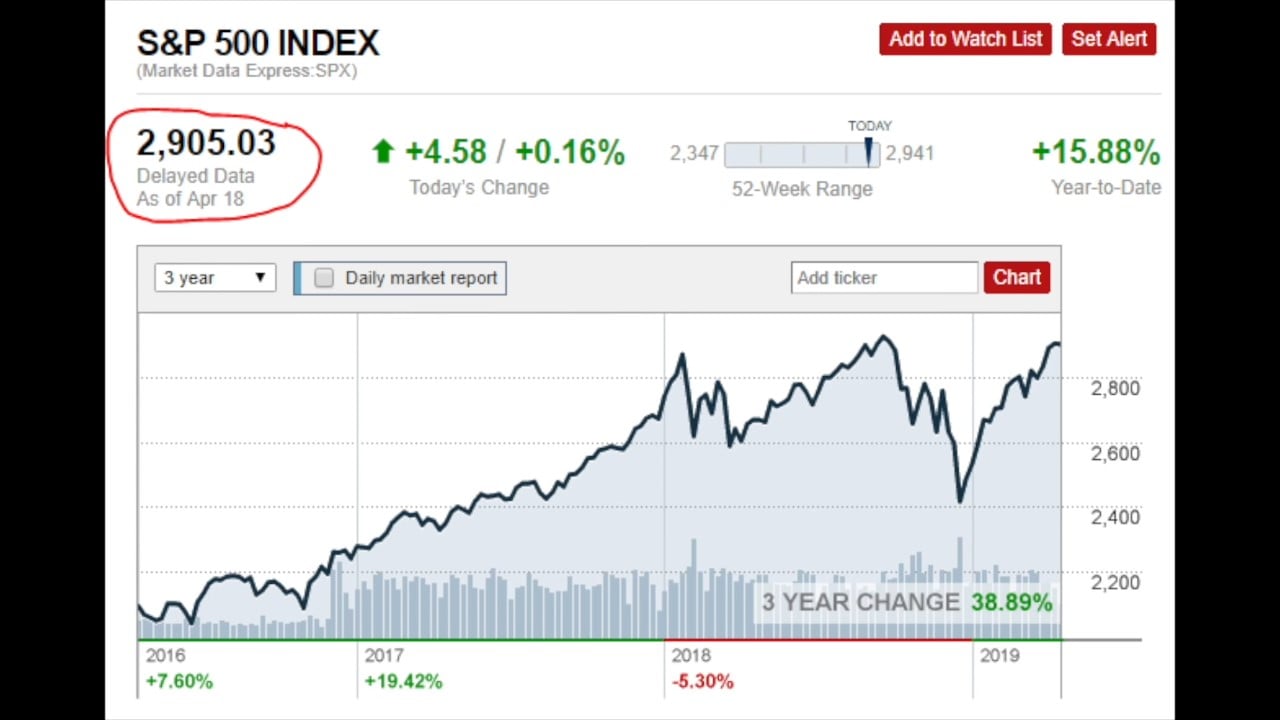Things are pretty simple, S&P 500 is close to all time highs, valuations are high and a stock market crash risk is huge. How to avoid and how low with the returns from stock go, is discussed in the video.
Stock Market COLLAPSE AHEAD! How Low Will Return From Stocks Go?
Q1 hedge fund letters, conference, scoops etc
Transcript
Good day fellow investors welcome to the stock market news with the long term fundamental twist. Does it pay 500 is close to its all time highs again. People mostly see that S&P 500 ratio is 22 dust's one hundred divided by 22. The earnings yield that the return on investment over the long term should be four point fifty five percent and some growth. Your total earnings growth of 2 percent per year and you have 5 to 6 percent growth investment return expected investment return over the long term. Then you compare it to the yield of the 10 year Treasury which is two point seventy five percent. And logically stocks are much cheaper are a much better investment investment than other opportunities out there. However this is limited thinking for me because it's fixed on the current period in time and many investors don't have options to think in a dynamic way. So they have to think fixed and here is where our advantage comes. And let's see what Buffett advises us to do. From his 1988 letter to shareholders he says the following in any sort of a contest financial mental or physical. It's an enormous advantage to have open Antz who have been taught that it is useless to even try. So the current investment environment is index funds edX invests in everything. It's useless to try to beat the market. I disagree Warren Buffett from the 1980s when he was still telling the true disagrees. So let's see if we can beat the market. And to beat the market we have to avoid the biggest risk of the market.
For me the biggest risk of the market is that things over a decade over five 10 years change significantly so if you have a dynamic view on what's going on you will see much bigger risks. And the key is to avoid them. Let me explain. So if I look at the long term yield on the Treasury just 12 years ago it was 5 percent. So on 5 percent the required return from stocks would not be 4.5 percent as it is now but it would be 7 8 percent. So in case of a higher required return from stocks the S&P 500 value would be much much lower. For example I can make the little table that shows this IP 500 in the next 10 years the year by year the required return from stocks or the price earnings ratio drops by 1. So in 2029 let's say that the U.S. Treasury will be back to 6 7 percent and that the required return from stocks will be around 8 9 percent for a price earnings ratio of 12. If earnings grow alongside the economy at 2 percent per year in 2029 the situation will be that the S&P 500 will be at 1931 points based on a price earnings ratio of 12. This isn't a crash. I think this will be even worse than a stock market crash of 40 percent next year. And then with a recovery. So this is the biggest risk and why would interest rates increase at all. Very simple because the U.S. government has to borrow more and more to finance its budget deficit. So over ten years things always change.
And this is the dynamic risk that I see hitting the stock market somewhere in the future and that's something I want to avoid. So how to do better. Well I'll give you an example of two stocks Procter and Gamble and Archer Daniels Midland that we haven't already discussed on this channel. So we'll have two companies similar companies stable companies with completely different price earnings ratios and the difference in Briner price earnings ratios will give you the long term difference in returns. Let's start with BMG. So very famous company. We all use the products where is stable. Everybody thinks it's a great company great stock and it actually is but it is part of the SEP 500 so the stock price is pushed very very high as everybody's chasing chasing such stocks. It is paying a dividend yield of two point eighty one percent but the stock hasn't go anywhere since 2007. If we look at the price.






